
方案详情
文
采用LaVison公司的粒子成像测速系统(PIV),对波浪和水流联合作用下双桩局部冲刷的流场进行了实验测量。
方案详情

Coastal Engineering 143 (2019) 63-75Contents lists available at ScienceDirect W.-G. Qi et al.Coastal Engineering 143 (2019) 63-75 Coastal Engineering journal homepage: www.elsevier.com/locate/coastaleng Physical modelling of local scour at twin piles under combined waves andcurrent Wen-Gang Qi, Yi-Xuan Lia,b,, Kai Xu, Fu-Ping Gaoa.b,* Key Laboratory for Mechanics in Fluid Solid Coupling Systems, Institute of Mechanics, Chinese Academy of Sciences, Beijing, 100190, China DSchool of Engineering Science, University of Chinese Academy of Sciences, Beijing, 100049, China ‘Civil Infrastructure Operations Dept, China State Construction Engineering Corp. Ltd, Beijing, 100044, China A RTICLEINFO ABSTRAC T Keywords:Local scourTwin pilesPile-groupSkew angleHorseshoe vortexPIV techniqueCombined waves and currentTime scale Equivalent pile diameter Under the actions of ocean waves and current, severe local scour can be induced around pile groups, significantlycompromising the safety of marine structures. A series of flume tests were conducted for physical modelling thelocal scouring process around twin piles in the cohesionless soils under combined waves and currents, andcompared with the pure current case. The effects of non-dimensional pile spacing (G/D) and flow skew angle (a)on the scour depth and time scale of scour around twin piles are intensively examined. The experimental ob-servations indicate that the influence of pile spacing on the scour depth development is much more significantfor the side-by-side (a=90°) arrangement than that for the tandem arrangement (a=0°). With the increase offlow skew angle a, the maximum scour depth is remarkably enhanced within the examined range 0 < G/D ≤ 3.0.When G/D =3.0, the pile group effect on the time scale is generally negligible for pure current cases, whereas aprominent pile-group effect can still be observed for combined wave-current cases, especially for the side-by-sidearrangement. A parameter of "equivalent pile diameter" is then introduced for evaluating the maximum scourdepth at the twin piles with the previous formulas for the single pile. Based on the existing and present ex-perimental data, the empirical formula of dimensionless equivalent pile diameter as the function of G/D and a isestablished to predict the maximum scour depth at the twin piles. 1. Introduction Pile groups are widely used in offshore and/or coastal engineeringpractice to support offshore oil and gas platforms and marine trans-portation systems (e.g.piers, jetties and cross-sea bridges). The safety ofoffshore piles in sand could be significantly compromised by waves/current-induced scour. It is of great significance to understand thescouring process around a group of vertical piles. While a substantialamount of knowledge has accumulated about scour around a single pileover the past half century (Sumer and Fredspe, 2002; Whitehouse,1998; Chiew and Melville, 1987; Larsen et al., 2017), the pile-groupeffects on the local scour still need to be further studied. The assessment of the scour depth is crucial in the design of thefoundation for structures. The scour around group of piles in regularwaves was investigated in laboratory tests by Sumer and Fredspe(1998). The dimensions of the scour hole were found to be affected bythe pile spacing and the orientation of the piles. The interference be-tween the piles becomes increasingly important as the pile spacing decreases. The pile group behaves as a single body for small values ofthe pile spacing. Field studies were later reported by Bayram and Larson(2000) for scour around a group of piles under waves. The field ob-servations indicate that the maximum scour depth has a distinct cor-relation with the Keulegan-Carpenter number, which is quite similar tothe laboratory data obtained by Sumer et al. (1992b). Twin piles are anelementary unit for pile groups. Liang et al. (2013) investigated thescour around twin piles subjected to oscillatory flows, and found thatthe individual piles in twin piles behave independently when the pilespacing is three times greater than the pile diameter. The pile heighteffect was also examined and an empirical formula was proposed todescribe the reduction of scour depth with pile height. For the randomwave scour around group of slender piles, Myrhaug and Rue (2005)proposed a tentative approach to derive the scour depth. For conditions of steady current, Ataie-Ashtiani and Beheshti (2006)carried out a series of experiments covering different pile group ar-rangements, spacing and flow speed, and a correction factor was de-rived to predict the maximum scour depth for the pile groups. A series ( E-mail a ddress: fpgao@imech.ac.cn (F. -P. Gao). ) ( https://doi.org/ 1 0.1016/j.coastaleng.2018.10.009 ) ( R eceived 21 O ctober 2017;Received in revised form 30 May 2018; Accepted 27 O ct o ber 2018 Available online 29 October 2018 ) ( 0378-3839/C 2018 Elsevier B.V. All ri g hts reserved. ) of flume tests were performed by Wang et al. (2016) to investigate thecharacteristics of local scour at twin piles in a tandem arrangementunder clear-water conditions. It was observed that the scour depth atthe rear pile was less than that at the front pile due to the shelteringeffects. Kim et al. (2014) numerically studied the local scour develop-ment around twin piles in a side-by-side or tandem arrangement underclear-water conditions. The features of scour development and bed to-pography in the equilibrium state were interpreted based on the flowfield around cylinders. The results of the maximum scour depths be-tween the simulations and the measured data reported by Ataie-Ashitian and Beheshti (2006) are consistent. The available experimental studies have contributed to enhance theknowledge about the pile-group effects on the local scour. In compar-ison, the flow field around pile groups, which is the inducement of thedevelopment of local scour, has not been well understood. Moreover,for the scour around pile groups under combined waves and current,which is a common scenario in marine environments, it appears thatfew experimental studies can be found. In this paper, a series of scour tests around twin piles were con-ducted in a water flume. The layout of twin piles is usually a portion ofa larger pile group. The understanding of the physics of local scouraround twin piles is fundamental to the general understanding of scouraround more complex pile groups. Two different hydrodynamic con-ditions, i.e., pure current and combined waves and current (wavespropagating along current direction), were examined. The pile-groupeffects on the local scour around twin piles are compared in reference todifferent hydrodynamic conditions and layouts. The flow measurementsaround twin piles under pure current were complementally carried outusing PIV technique, and the results were analyzed to physically explainthe pile-group effects on local scour. 2. Physical modelling methods 2.1. Experimental set-up The tests were conducted in a flow-structure-soil interaction flume(52.0 m long, 1.0m wide and 1.5 m high). The flume can generate aconstant flow and waves concurrently. A saturated sand-bed was pre-pared to simulate a sandy seabed, which is 0.5 m thick and 6.0 m long(see Fig.1). The water depth hwas kept constant at 0.5 m. The mainphysical properties of sand-bed are: mean size of sand grainsdso=0.15 mm, geometric standard deviation of soil grains ag =1.65,soil porosity n= 0.35, relative density Dr=0.62 and submerged unitweight of soil y'=10.65kN/m. As illustrated in Fig. 1, the far-field wave height was measured witha wave height gauge along the central line at the distance of 15 m apartfrom the front pile. An Acoustic Doppler Velocimetry (ADV) wasmounted to measure the undisturbed flow velocity at the level of 1.0Dabove the sand-bed at the distance of 20 m apart from the front pilecenter. The scour depth evolutions at upstream and downstream of eachpile were monitored with four ultrasonic distance sensors. To enhance the understanding of the physical mechanism for localscour around twin piles, a PIV measurement was employed to capturethe characteristics of the flow field around piles. At the test section, the Fig.1. Schematic diagram of scour tests for twin piles. Fig.2. Sketch of PIV set-up for twin piles. bottom of flume is replaced with a piece of 1.0 m × 1.0 m transparentglass installed 16.0 m downstream of the flow inlet, as shown in Fig. 2.Through the transparent glass, double-pulsed laser sheets generated bya LaVision PIV system illuminate the flow field around the piles fromthe bottom side. The camera was located outside the flume test section'sside bottom. The time between exposures for image pairs was variedfrom test case to test case (for more details, refer to Anderson andLynch, 2016). The flow around the base of a vertical pile generally consists of twofundamental structures: horseshoe vortex (HSV) and wake vortices(Sumer et al., 1997). Under the conditions of pure current and com-bined waves and current, the scouring process is mainly controlled bythe HSV (Qi and Gao, 2014a). Therefore, the present PIV tests mainlyfocus on the flow visualization of the HSV in front of piles. The HSV around a pile is usually confined to a very limited space atthe upstream junction corner (Kirkil and Constantinescu, 2015). ThePIV viewing area was thus chosen at 100 × 75 mm (i.e. 0.833 ×0.625D) in the x-y plane, yielding an image of resolution approximately 72.5um/pixel. Processing of the data was performed using LaVision Inc.'sDaVis 7.2 software. Particle image velocimetry velocity vectors wereobtained by cross-correlation of the image pairs. An interrogationwindow size of 64× 64 pixels with an overlapping of 50% was used.The resulting velocity vector fields for each image pair contained ap-proximately 43 x 32 velocity vectors (u, v) with a vector spacing(spatial resolution) of approximately 2.33 ×2.33 mm. For each PIV testcase, a total of 300 image pairs were acquired at a sampling rate of4.75 Hz (i.e. 63.16 s recordings), then averaged temporally to reflect thetime-average characteristics of the flow field around twin piles. The freestream velocity 3.0 m upstream of the twin piles model was measuredusing acoustic Doppler velocimetry (ADV). The magnitude of swirling strength (Chong et al., 1990), which candiscriminate between vortices and shear motions successfully, is ap-plied to qualify the intensity of the HSV at the upstream corner of pilesin this study. The definition of swirling strength is related to the dis-criminant of complex eigenvalues of the local velocity gradient tensor.More details about the definition of swirling strength could refer toZang et al. (2013). 2.2. Test conditions Two pairs of plexiglass model piles (outer diameter of D= 12.0 cmandD=8.0cm) were adopted in the scour tests. As illustrated in Fig.3,the twin piles were tested at four different flow skew angles (a=0°,30°,60°,90°). The distance between the two piles was varied, with thegap-to-diameter ratio, G/D, ranging from 0 to 3.0. Note that the piles ofD= 12.0 cm were adopted for a=0°and 30°while the piles ofD= 8.0 cm were adopted for a=60° and 90°, to minimize the blockageeffect. Two hydrodynamic conditions,i.e., pure current and combinedwaves and current, were adopted in the tests. Test conditions and measured maximum scour depths at twin piles Fig. 3. Layout of twin piles for scour tests. are summarized in Table 1 for pure current, and Table 2 for combinedwaves and current. The wave parameters for the cases under combinedwaves and current are: wave height H=0.14 m and wave periodT=1.8 s. As a reference, scour around a single pile was also tested. Thedata of scour around a single pile with D=8.0 cm under combinedwaves and current is missing due to an unexpected crash of the storagedisk. To obtain the ratio of the maximum scour depth around twin piles(S) to that around a single pile (So) for the cases with D= 8.0 cm undercombined waves and current, the corresponding So was estimated to be7.4 cm based on the empirical prediction formula proposed by Qi andGao (2014a). This value of So is approximately equal to that under thecondition of a=0 and G=3.0 (So=7.8 cm, see run 27 in Table 2).The analyses in Section 3.2 indicate that the pile-group effect generallyvanishes for G/D ≥ 3.0. Therefore, the estimated value of So =7.4cmfor the cases with D =8.0 cm under combined waves and current isconsidered to be reasonable. The quantities Ue and Uwm in Tables 1 and 2 are individually thevelocity of the current component and orbital component of the un-disturbed flow, measured at the level of 1.0D above the sand-bed, re-presenting the characteristic flow velocity at the boundary layer. Thepile Reynolds number (Re) is defined as in which Um (=U +Uwm) is the maximum value of the combinedwaves and current velocity at the level of 1.0D above the sand-bed andi is the kinematic viscosity of water. The pile Froude number (Fr) is defined as The average-velocity based pile Froude number (Fra) is defined as(see Qi and Gao,2014a) average water particle velocity during one-quarter cycle of oscillationunder combined waves and current, when the oscillatory motion andthe current are in the same direction; and g is the gravitational accel-eration. The Keulegan-Carpenter number (KC) is defined as The Shields parameter (0) is defined as in which U is the maximum value of the undisturbed friction velocity,p, is the sediment grain density and p is the water density. The detailedcalculation procedure of 0 is given by Soulsby (1997). The criticalShields parameter coinciding with sediment motion can be calculatedby (Soulsby, 1997) in which D*=dso[(s-1)g/v 2]1/3 is known as the dimensionless grainsize and s is the specific gravity of sand grains. For the present ex-amined sand-bed, the value of Ocr is 0.058. As shown in Tables 1 and 2,the clear-water scour regime prevailed for pure current conditions(0
确定
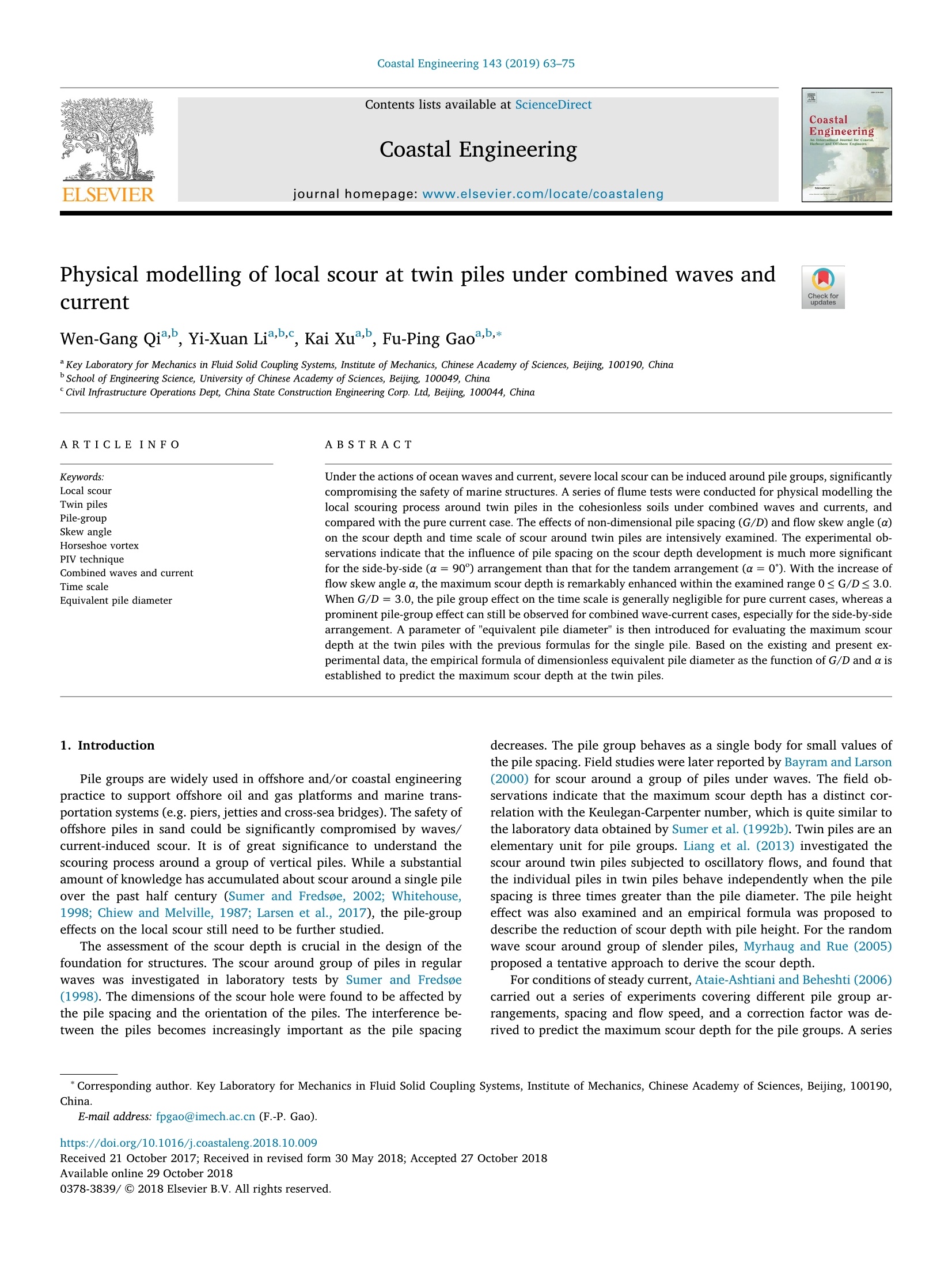
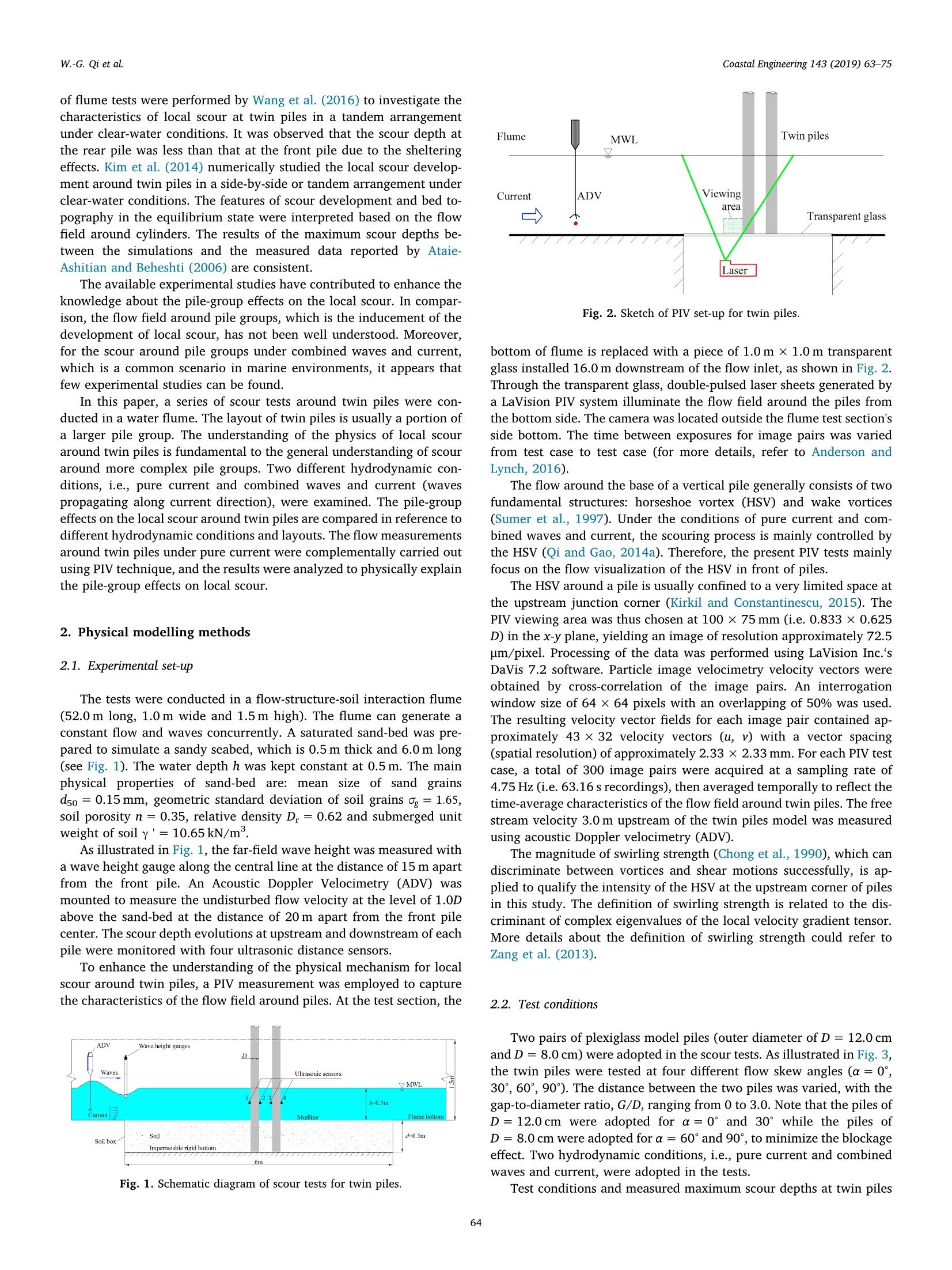
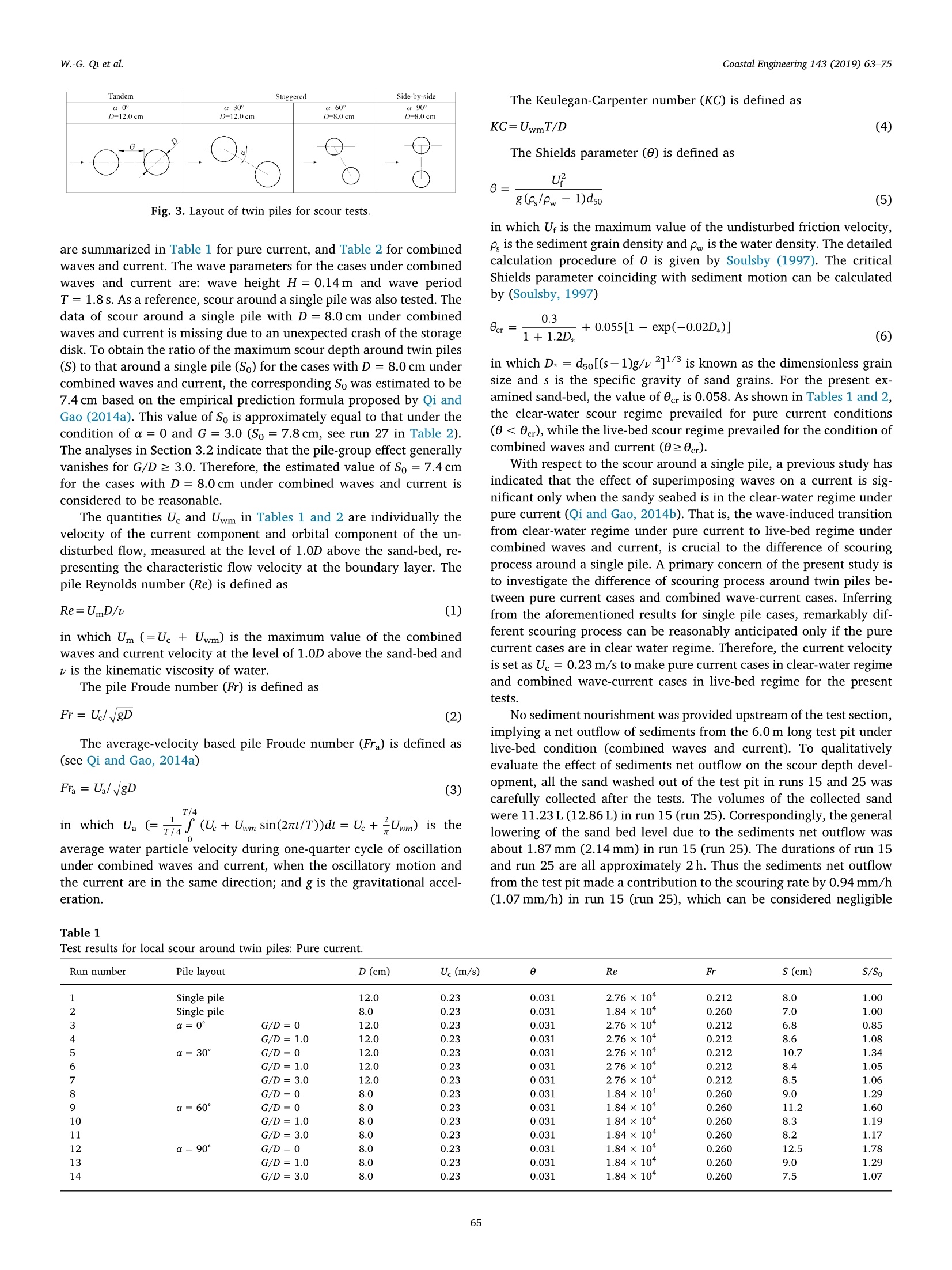
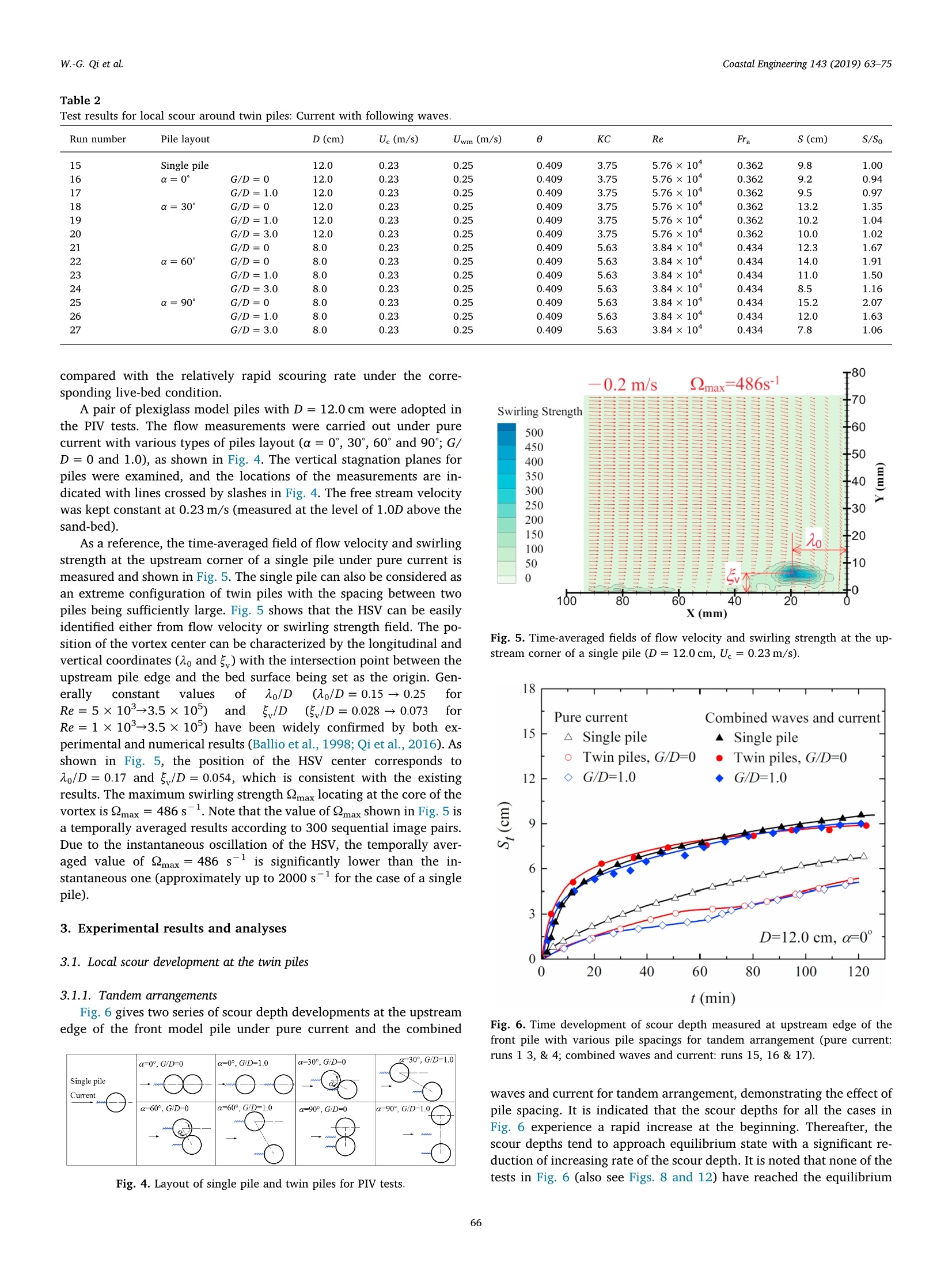
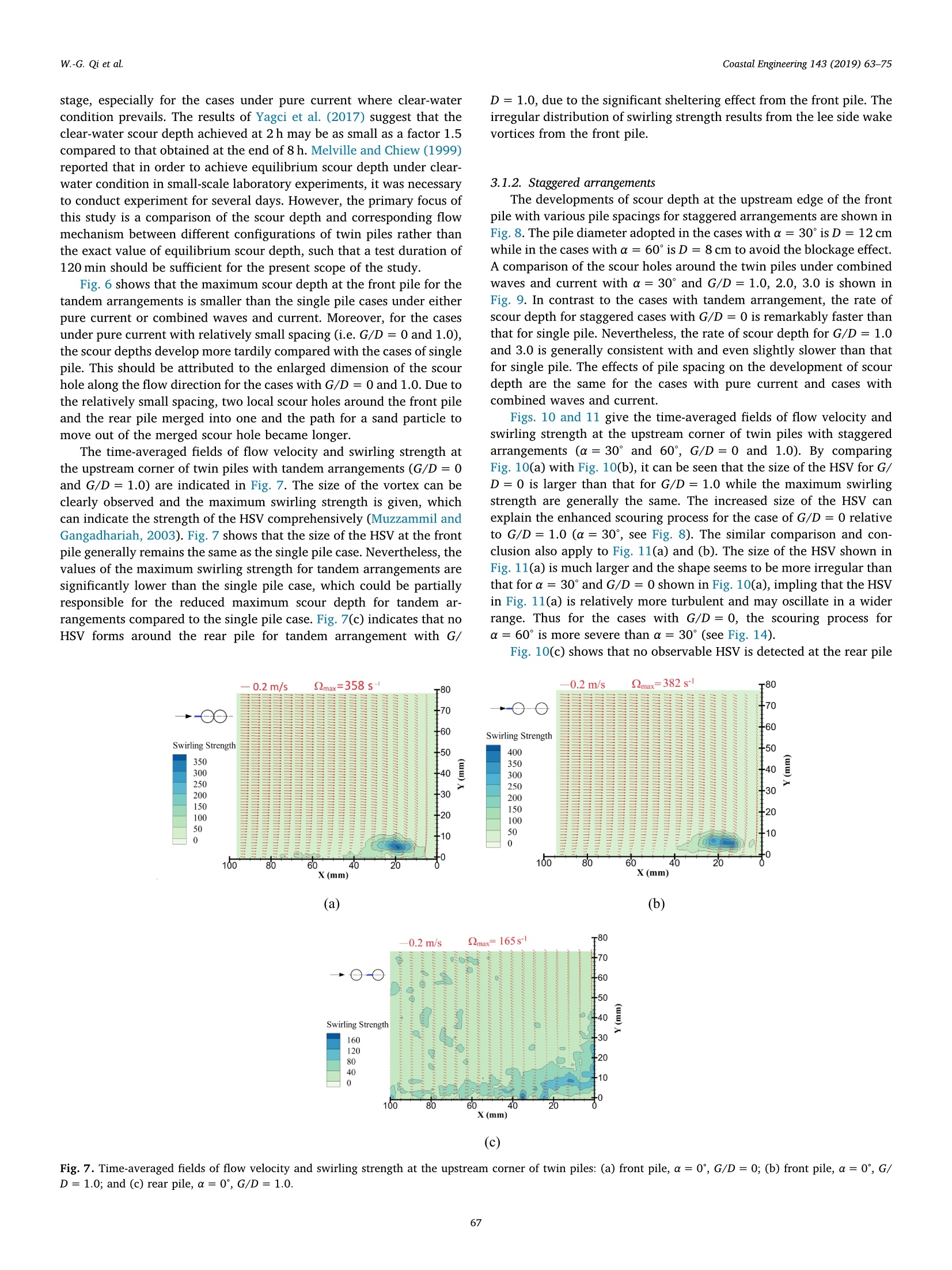
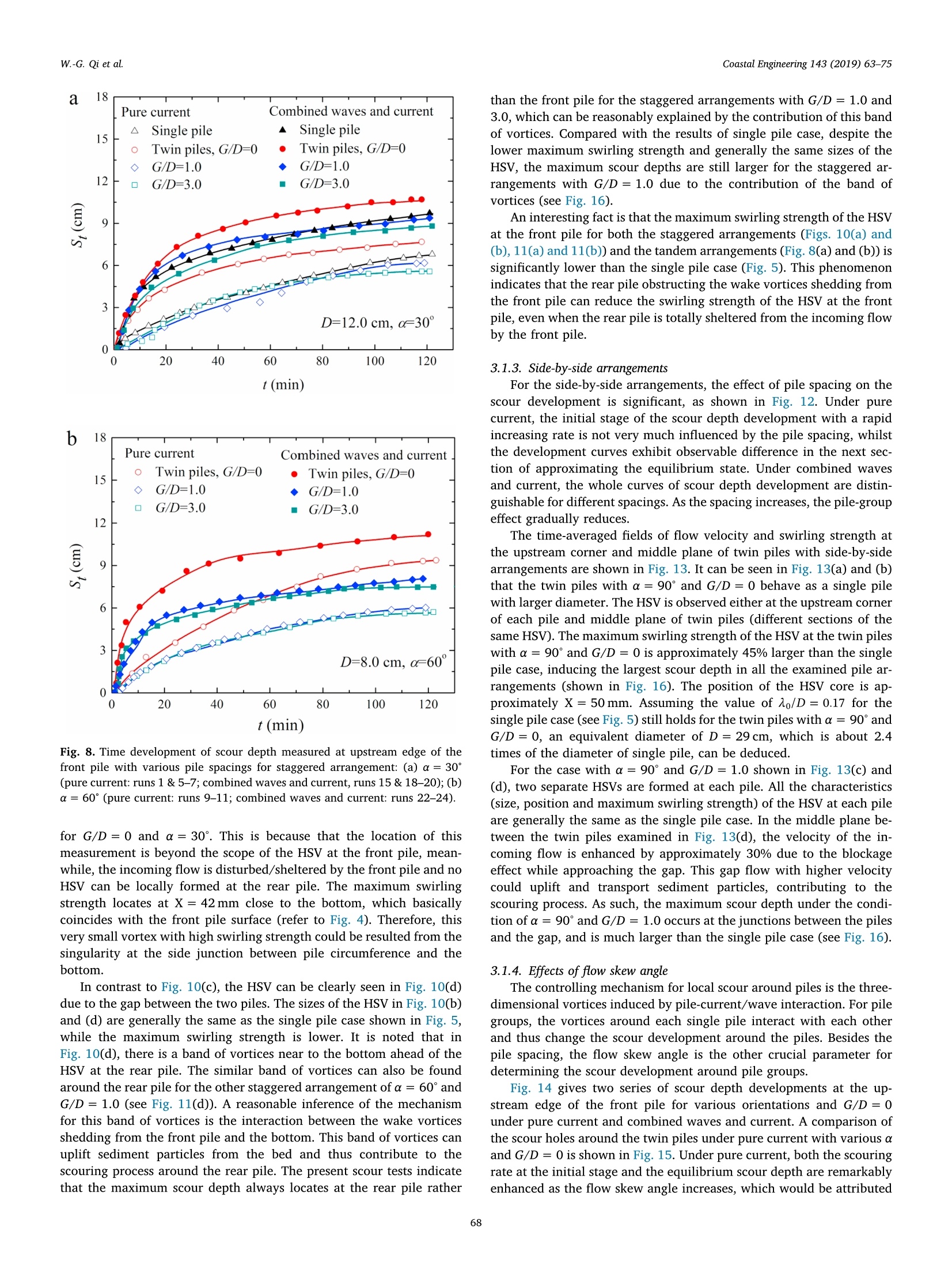
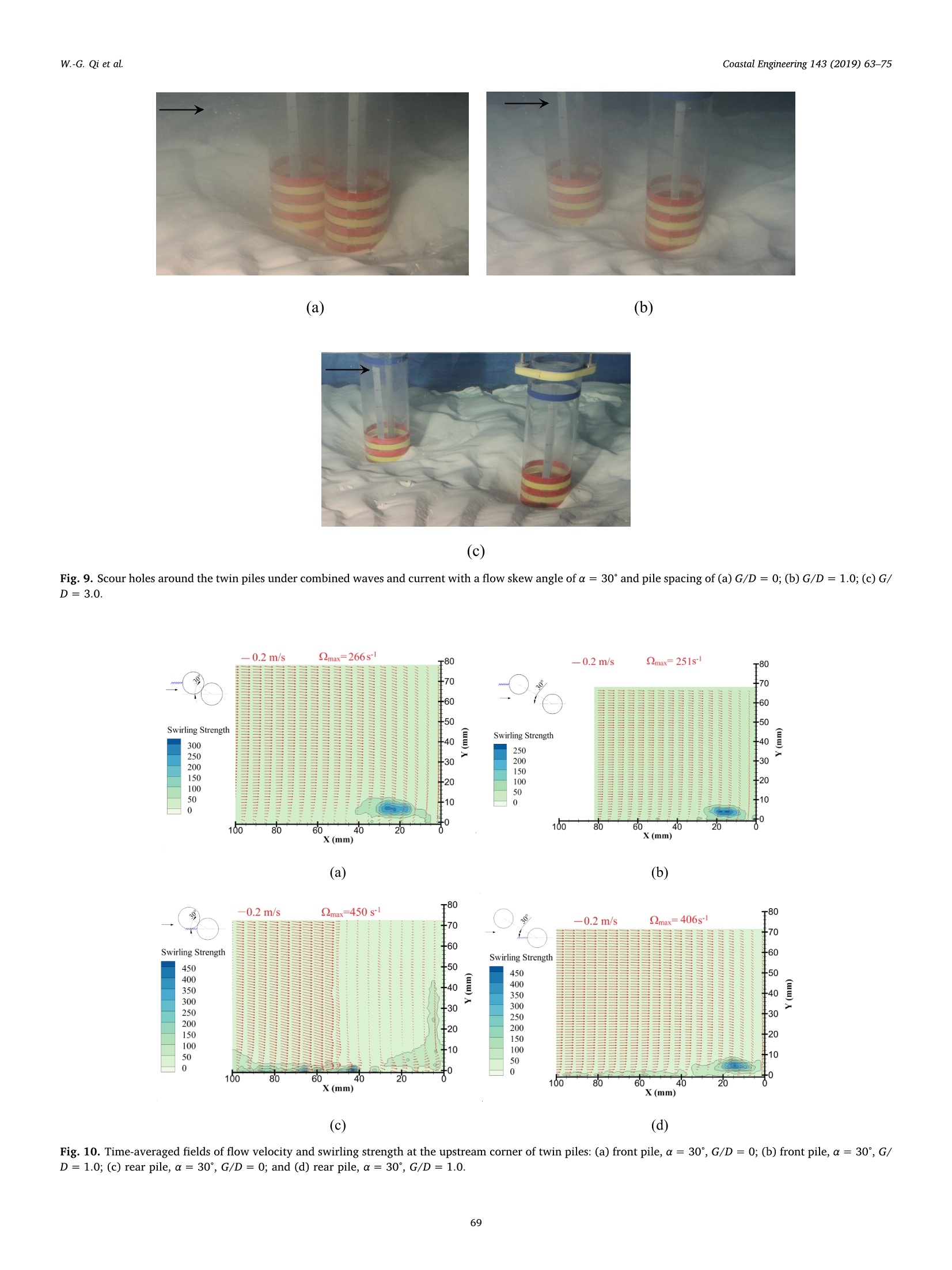
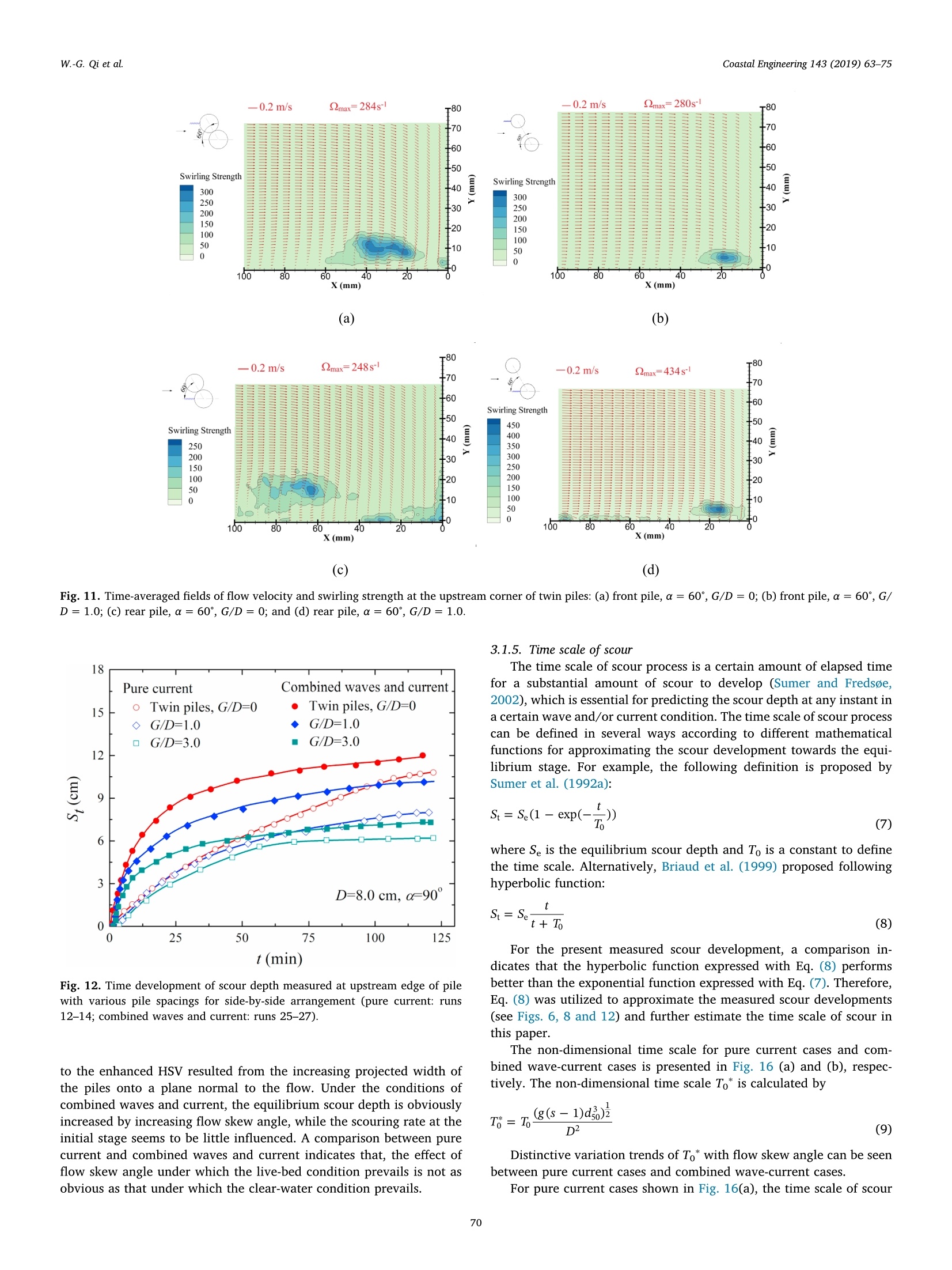
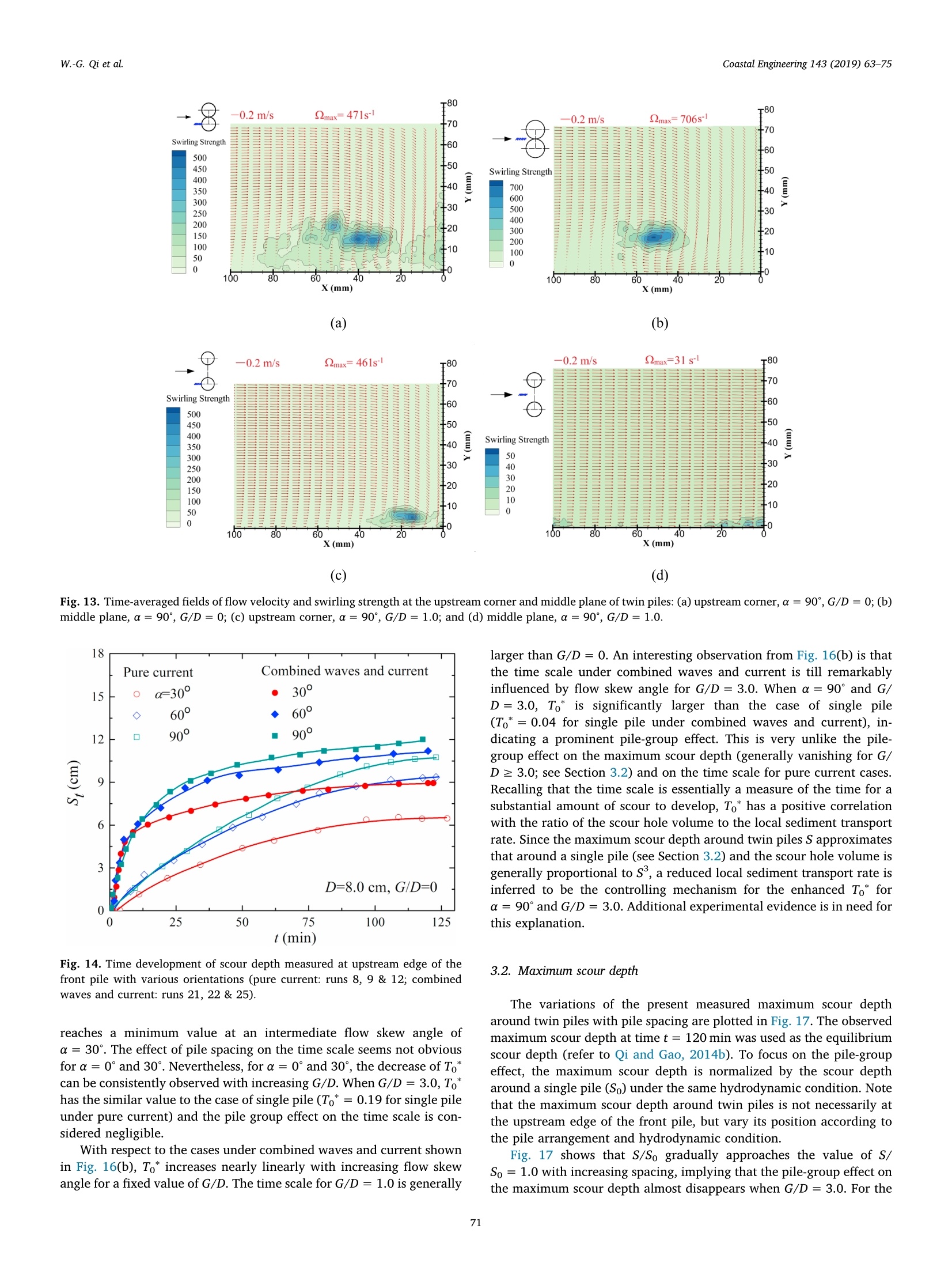
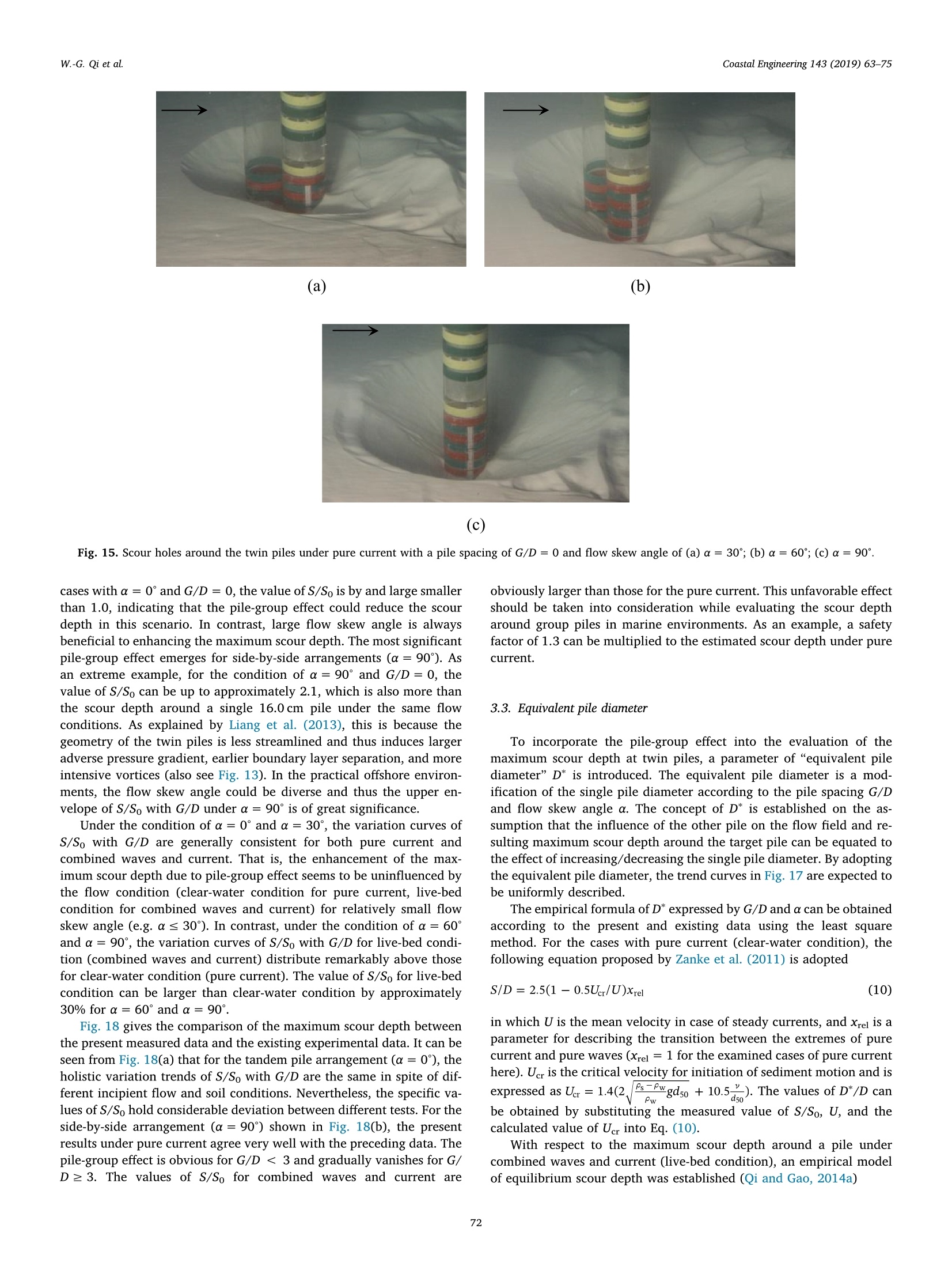
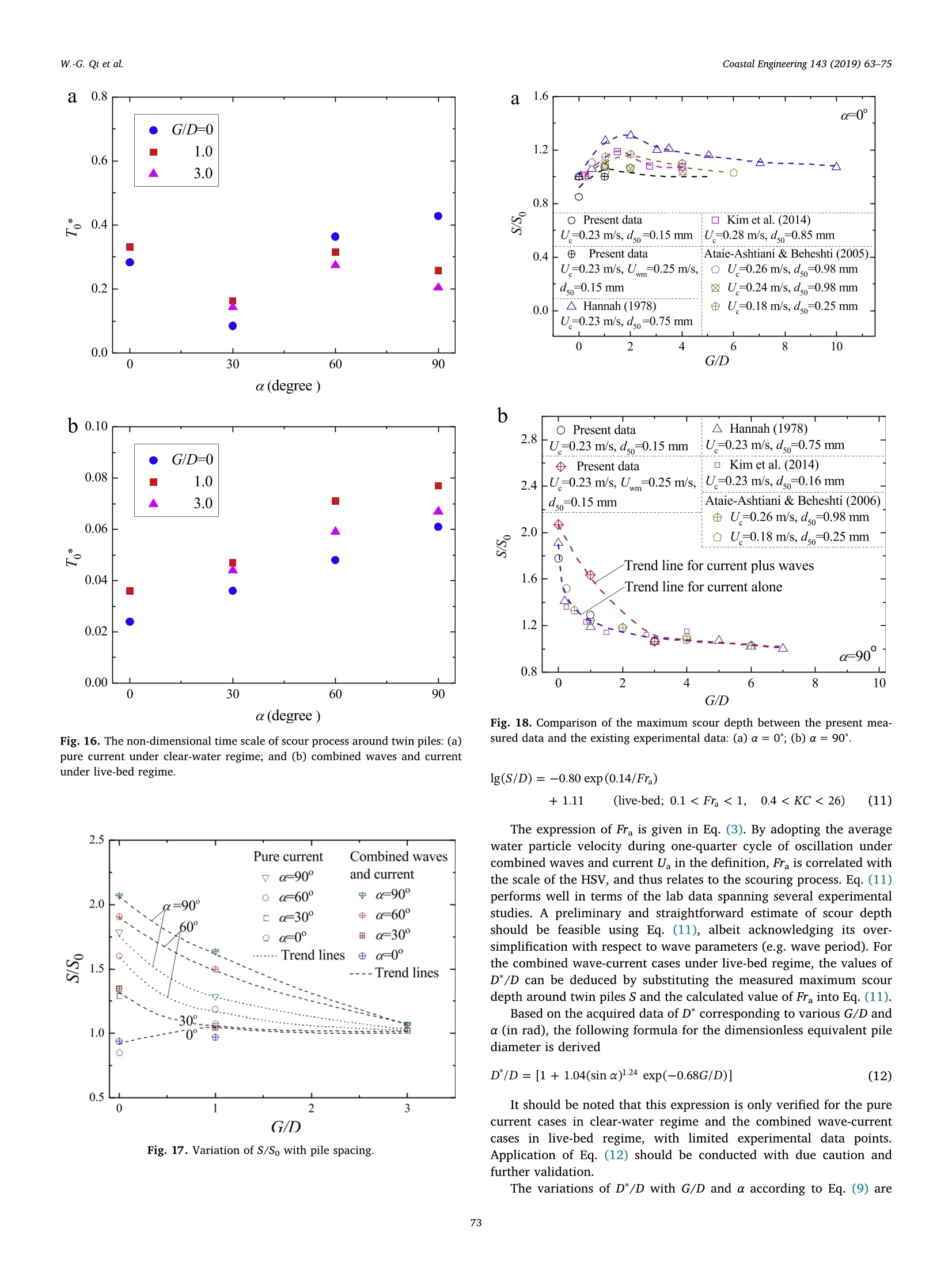
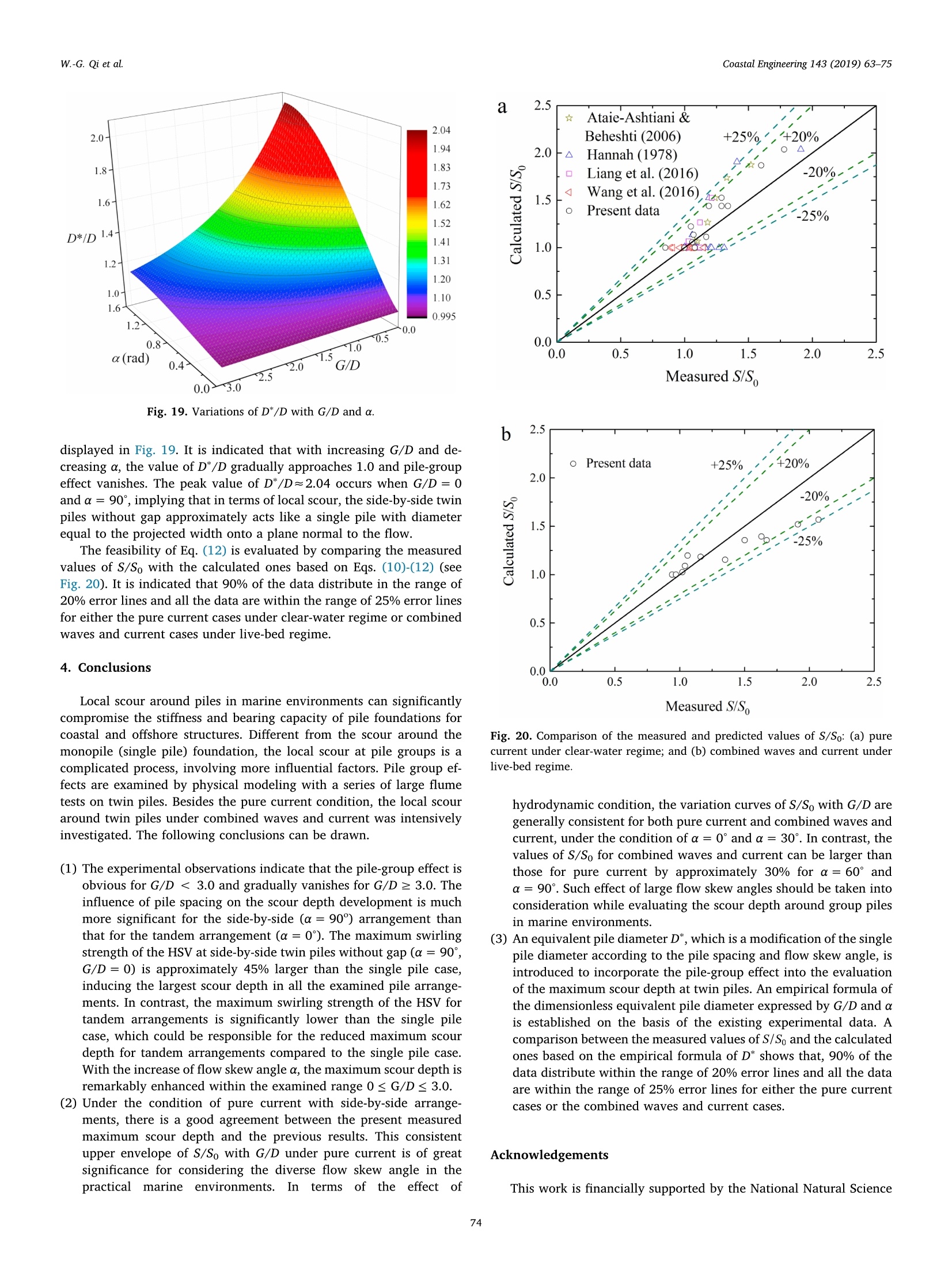
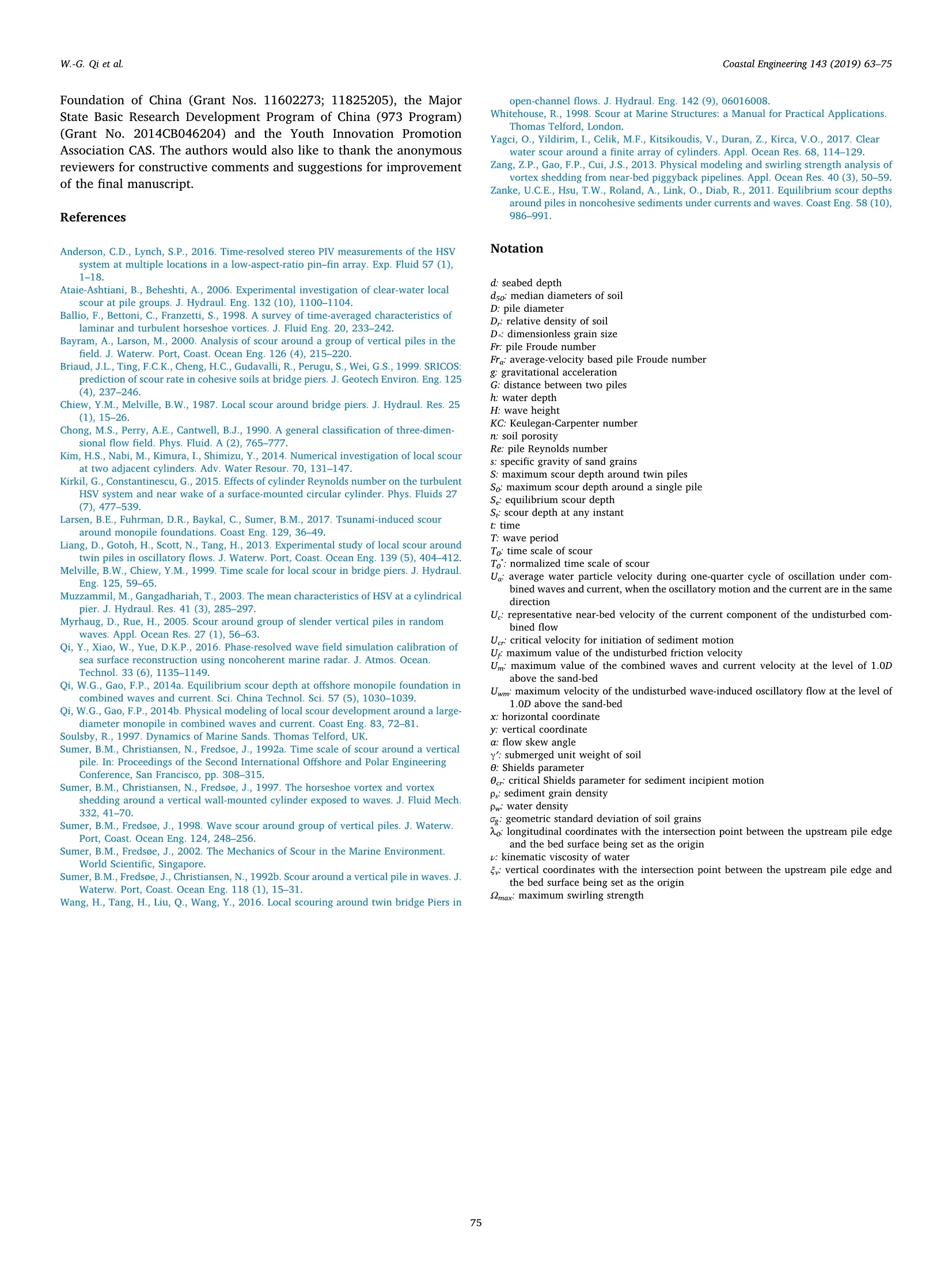
还剩11页未读,是否继续阅读?
北京欧兰科技发展有限公司为您提供《水中速度场检测方案(粒子图像测速)》,该方案主要用于其他中速度场检测,参考标准--,《水中速度场检测方案(粒子图像测速)》用到的仪器有德国LaVision PIV/PLIF粒子成像测速场仪、LaVision DaVis 智能成像软件平台
相关方案
更多
该厂商其他方案
更多










